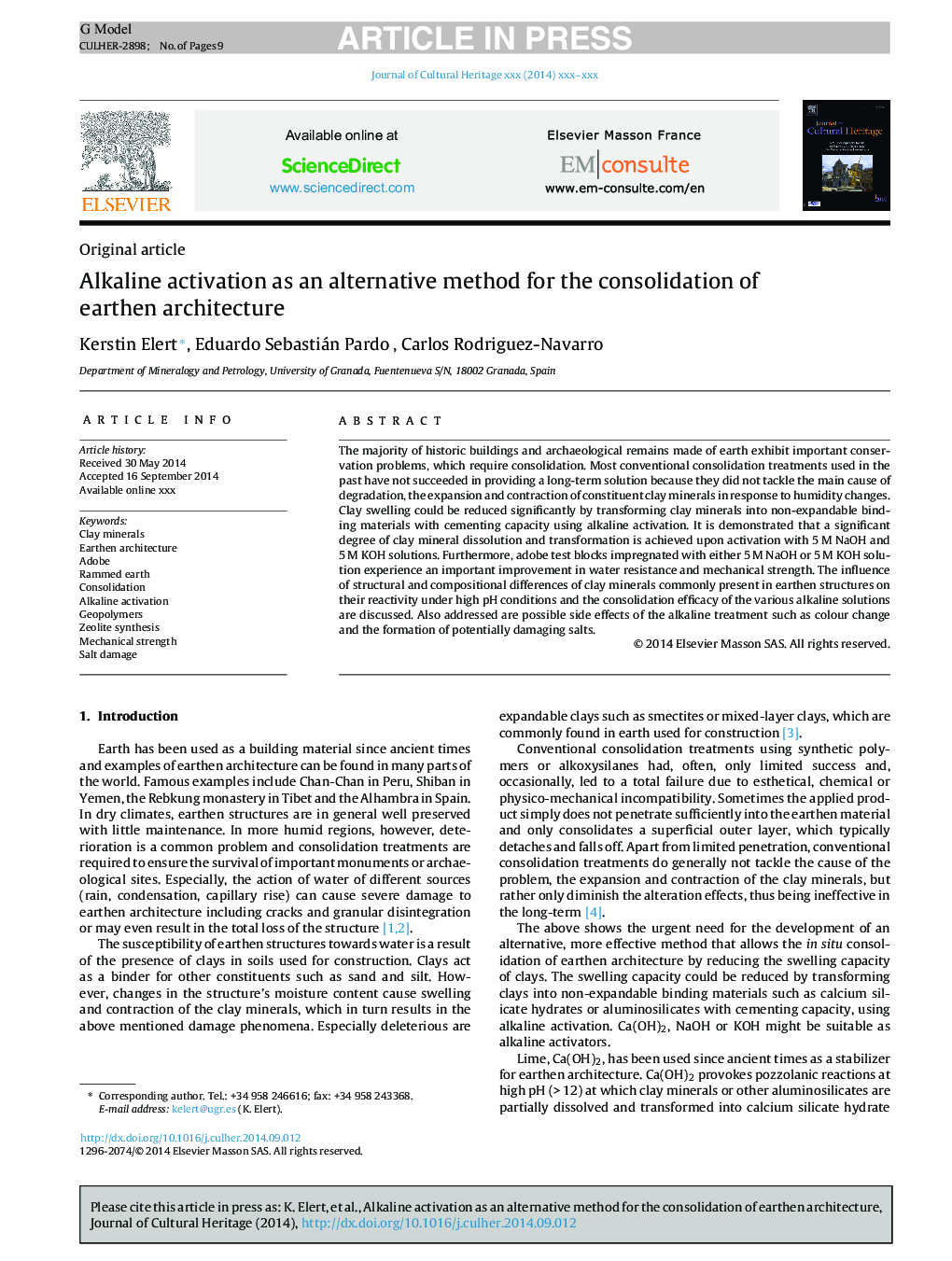| Article ID | Journal | Published Year | Pages | File Type |
|---|---|---|---|---|
| 10499997 | Journal of Cultural Heritage | 2015 | 9 Pages |
Abstract
The majority of historic buildings and archaeological remains made of earth exhibit important conservation problems, which require consolidation. Most conventional consolidation treatments used in the past have not succeeded in providing a long-term solution because they did not tackle the main cause of degradation, the expansion and contraction of constituent clay minerals in response to humidity changes. Clay swelling could be reduced significantly by transforming clay minerals into non-expandable binding materials with cementing capacity using alkaline activation. It is demonstrated that a significant degree of clay mineral dissolution and transformation is achieved upon activation with 5Â M NaOH and 5Â M KOH solutions. Furthermore, adobe test blocks impregnated with either 5Â M NaOH or 5Â M KOH solution experience an important improvement in water resistance and mechanical strength. The influence of structural and compositional differences of clay minerals commonly present in earthen structures on their reactivity under high pH conditions and the consolidation efficacy of the various alkaline solutions are discussed. Also addressed are possible side effects of the alkaline treatment such as colour change and the formation of potentially damaging salts.
Keywords
Related Topics
Physical Sciences and Engineering
Chemistry
Physical and Theoretical Chemistry
Authors
Kerstin Elert, Eduardo Sebastián Pardo, Carlos Rodriguez-Navarro,
